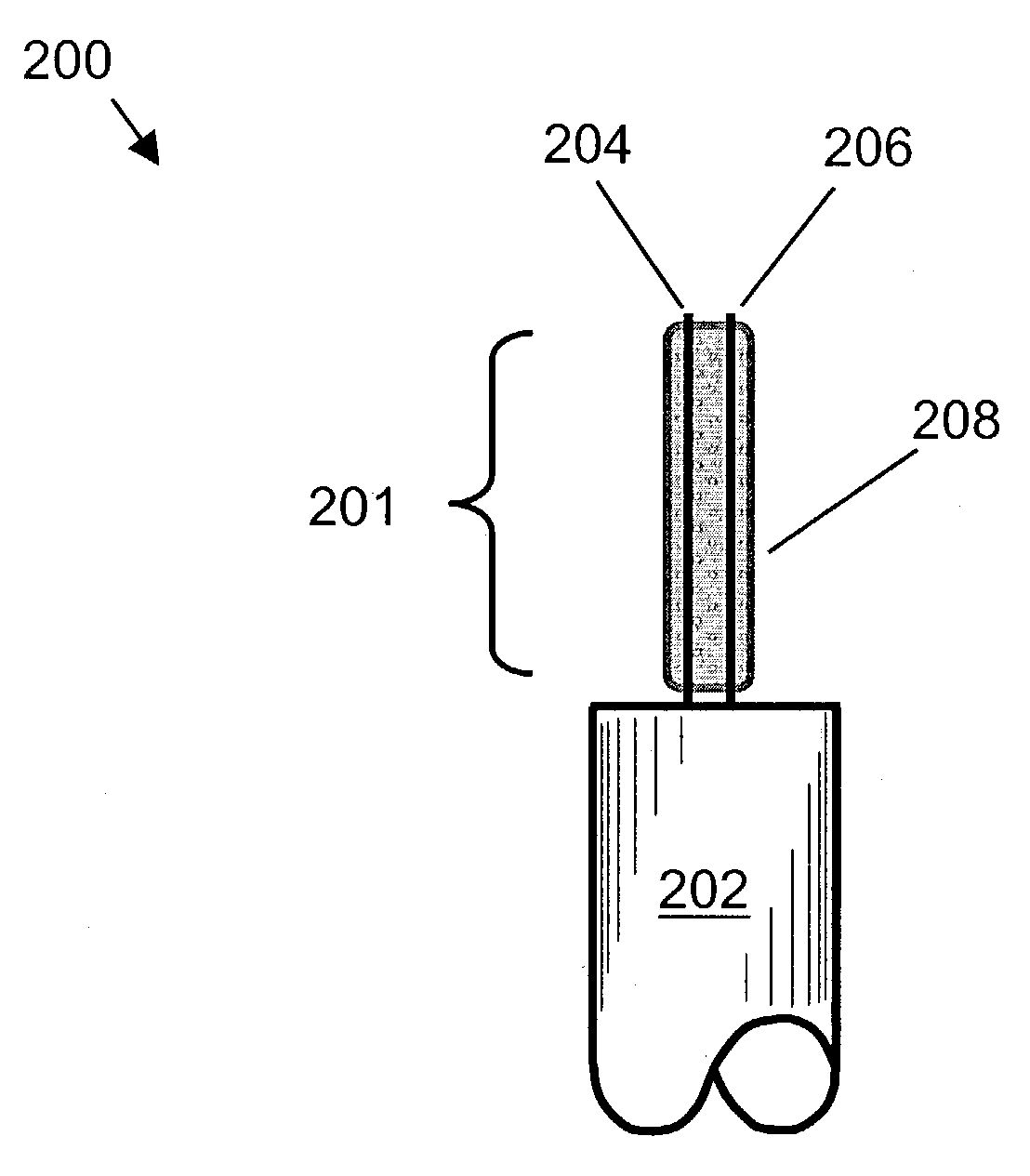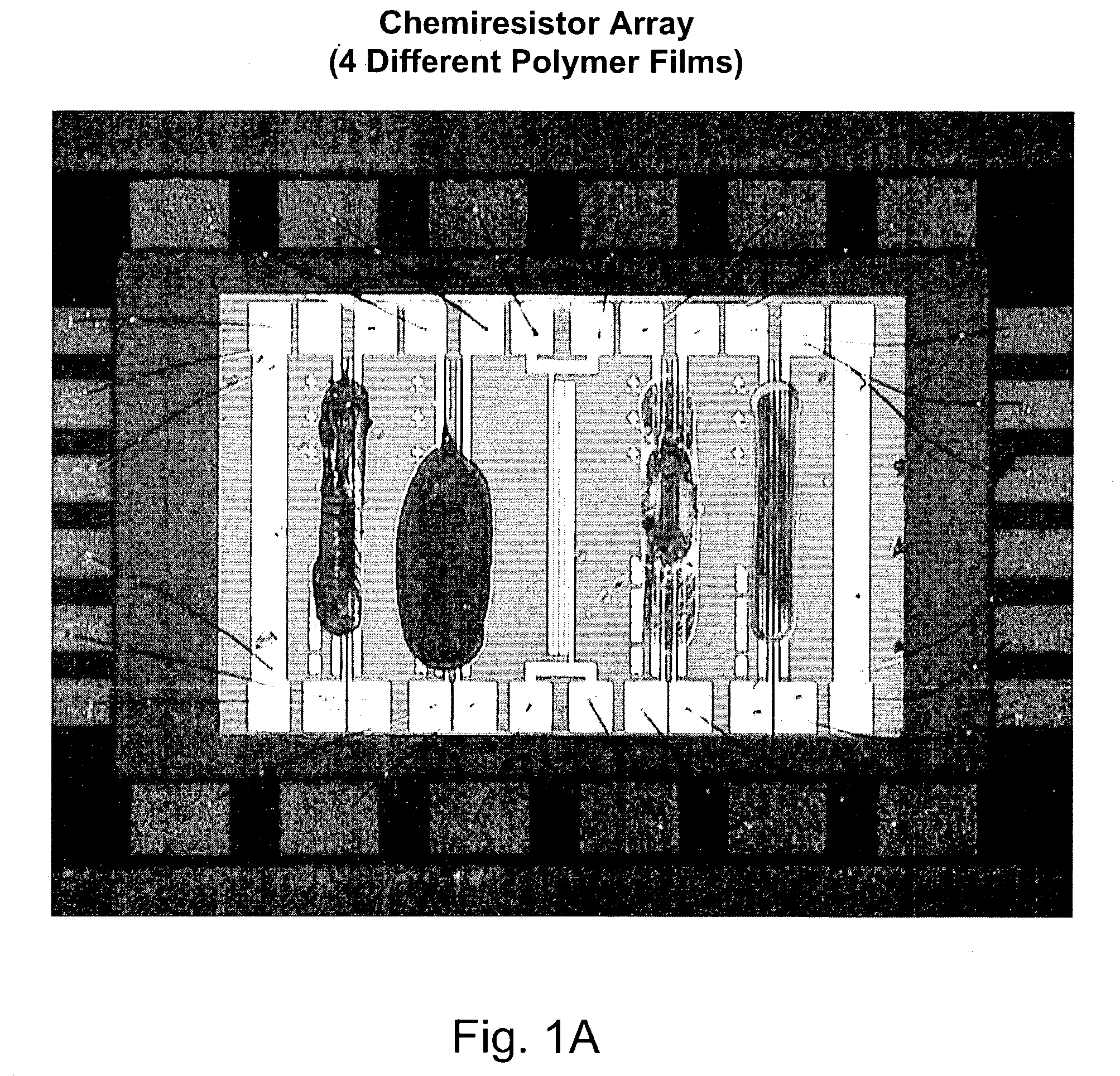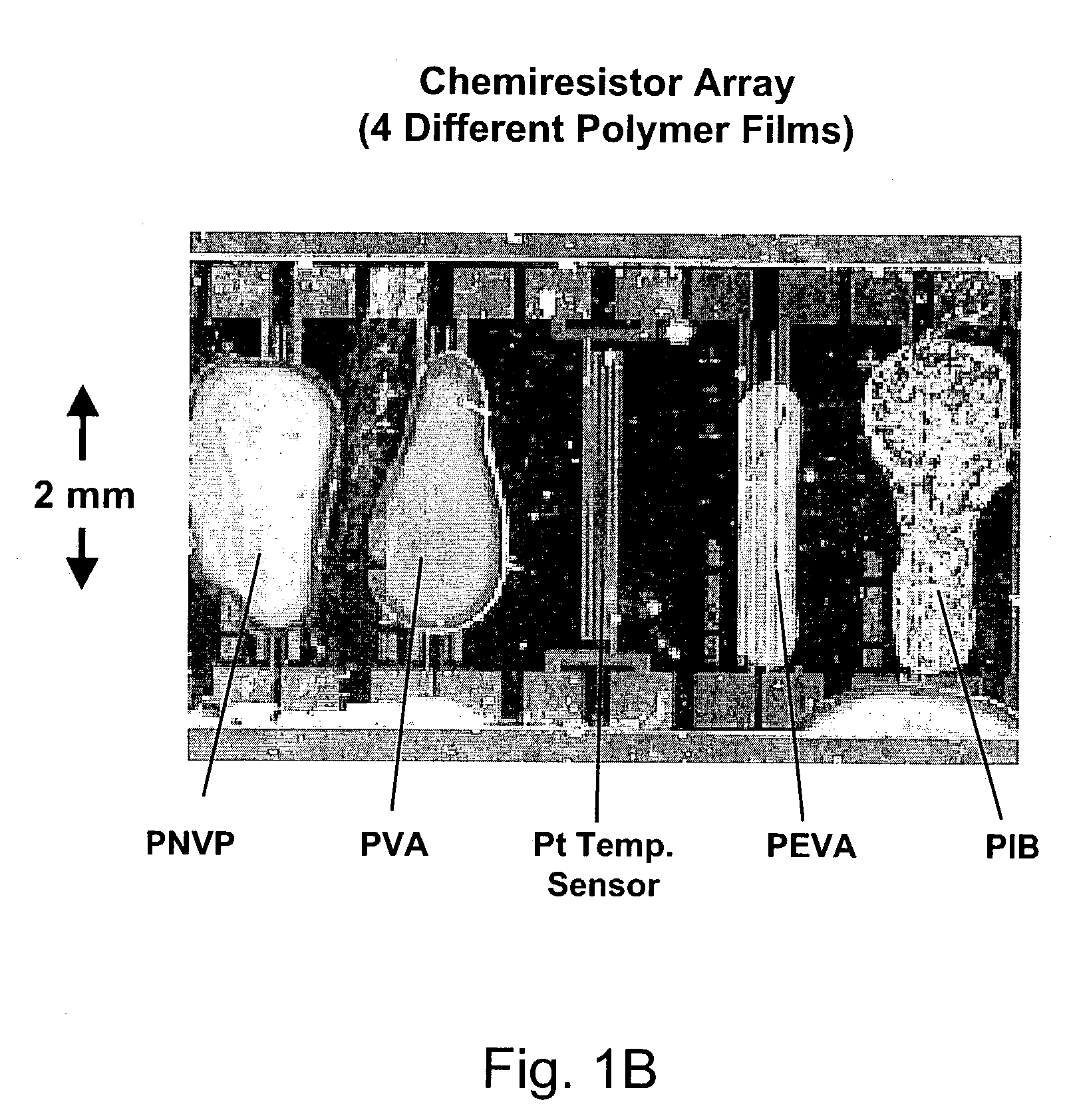Multi-pin chemiresistors for microchemical sensors
a microchemical sensor and chemiresistors technology, applied in the direction of instruments, calibration apparatus, synthetic resin layered products, etc., can solve the problems of difficult precise placement and volume control, unfavorable measurement accuracy, and inconvenient replacement, etc., to achieve easy removal and replacement, and low cost. , the effect of easy fabrication
- Summary
- Abstract
- Description
- Claims
- Application Information
AI Technical Summary
Benefits of technology
Problems solved by technology
Method used
Image
Examples
Embodiment Construction
[0082]The words “vapor” and “gas” are used interchangeably herein. Similarly, the acronym VOC, which stands for Volatile Organic Compound, is intended herein to also encompass all inorganic volatile compounds (VCs), other solvents, volatile toxic chemicals, volatile explosives, and organic compounds even having low volatility.
[0083]The words “polymer film”, “polymer coating”, “chemically sensitive polymer film”, “polymer composite”, “chemically sensitive polymer deposit”, “polymer deposit”, unless otherwise defined, all refer to the disc of chemiresistive ink after it has been deposited on a substrate and dried.
[0084]FIG. 4a illustrates a schematic plan view of a first example of a circular chemiresistor, according to the present invention. Circular chemiresistor 10 comprises an electrically insulating substrate 12 with a pair of conductive lines 13, 14 disposed on the substrate, with each line having a distal end. The pair of distal ends conductive lines 13, 14 are arranged in a ci...
PUM
| Property | Measurement | Unit |
|---|---|---|
| Length | aaaaa | aaaaa |
| Length | aaaaa | aaaaa |
| Diameter | aaaaa | aaaaa |
Abstract
Description
Claims
Application Information
 Login to View More
Login to View More - R&D
- Intellectual Property
- Life Sciences
- Materials
- Tech Scout
- Unparalleled Data Quality
- Higher Quality Content
- 60% Fewer Hallucinations
Browse by: Latest US Patents, China's latest patents, Technical Efficacy Thesaurus, Application Domain, Technology Topic, Popular Technical Reports.
© 2025 PatSnap. All rights reserved.Legal|Privacy policy|Modern Slavery Act Transparency Statement|Sitemap|About US| Contact US: help@patsnap.com



